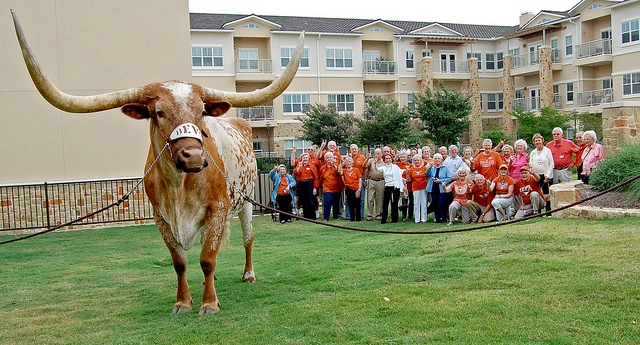Leading Global Geneticist Spencer Wells Rocks Longhorn Village

From cave paintings to CSI, people are great at telling stories. Yet our most fundamental story—the history of human evolution—remains largely untold. Spencer Wells, BS ’88, Outstanding Young Texas Ex, is changing that.
Wells is head of the Genographic Project, a seven-year (and counting) effort that uses DNA analysis to map how humans populated the planet.
A Renaissance man whose job titles include geneticist, anthropologist, author, documentary filmmaker, and National Geographic explorer-in-residence, Wells stopped by the Longhorn Village retirement community in Steiner Ranch a few days ago to lecture on his research.
Wells and his fellow researchers travel the globe to gather DNA samples from indigenous peoples. He’s collected 72,000 samples so far, nearing his goal of 80,000.
Why indigenous peoples? Because they’ve lived in one place for a long time, their genetic code is more similar than that of people who are the product of “melting pot” cultures. This similarity makes it easier for scientists to trace genetic change to deduce where and when humans lived.
“So far, the data has shown unequivocally that we’re all much more closely related than we had thought,” Wells said. He said that chimpanzees, our closest living relative, have four to 10 times as much genetic variation as humans.
This finding has helped researchers create the first-ever detailed map of human migration.
This much is known for sure: Homo sapiens first left Africa about 60,000 years ago. After passing through the Middle East, one branch on the family tree, called a haplogroup, headed to Asia, while another ended up in Australia.
The Genographic Project doesn’t sample only indigenous people. Anyone can participate by donating his or her DNA with a simple cheek swab, and the results are added to the researchers’ database.
Wells wowed the crowd when he pulled up a detailed map of the family tree of Roger Griffin, a Longhorn Village resident. “Let me guess—your father’s ancestors are probably from the British Isles,” Wells said. Griffin confirmed that he was correct.
The project is also collaborating with indigenous peoples to preserve cultural traditions. “Of the 6,000 languages spoken today, 50 to 90 percent will be lost within this century,” Wells said. “Proceeds from the DNA kits we sell fund our Legacy Grants, which help protect at-risk cultures.”
After Wells' lecture, residents enjoyed a cookout and a special appearance by Bevo.

Top: Spencer Wells speaks to his Longhorn Village audience. Photo by Marisa Vasquez. Below: Bevo graces the Steiner Ranch retirement community. Courtesy Jared Hill and Al Sommers.






